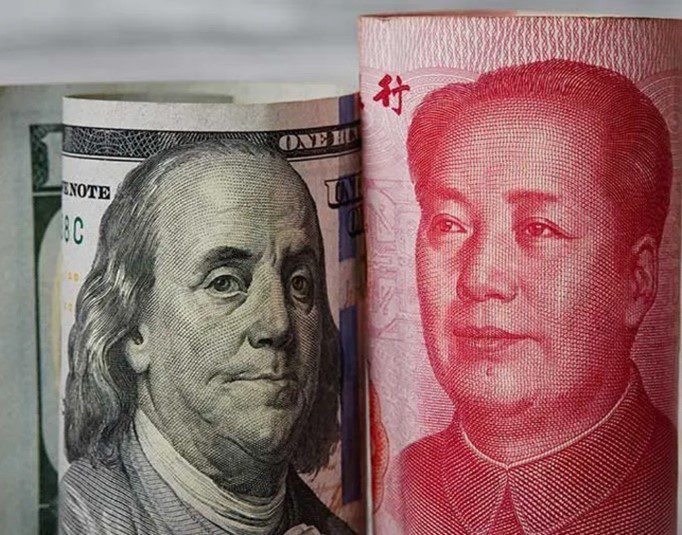Where to invest next year? An overview for ASEAN and China environments
Over the last two years, the Asian region kept attracting capital from abroad. If foreign direct investments (FDIs) decreased 16% at global level in 2017, Asian countries remained stable. This trend is due to a variety of reasons, among which we can identify the development of infrastructures and technology, the raising investment capacity of intra-Asian countries, the disruption of supply chain among countries (global supply chain), and an increasingly skilled labor force. As the region confirms being attractive, more and more multinational companies (MNC) and small and medium enterprises (SMEs) should consider doing business in Asia.
S.J. Grand accompanies you in the Asian region business environment, offering an outlook of recent FDIs. To learn more about investment opportunities in Asia, do not hesitate to contact us.
FDIs Inflows to Asia in 2017: a brief economic outlook
Even if in 2017 FDIs decreased worldwide, developing Asia registered the largest inbound quota. According to a report published by UNCTAD, FDIs in Asia were expected to grow 15% in 2017 (up to USD 515 billion). It should be noted beforehand that we refer to Asia, and developing Asia, mainly considering China, Hong Kong, and South-East Asia (Viet Nam, Philippines, Cambodia, Thailand, Singapore, Indonesia, and Malaysia).
As reported by the Asian Development Bank (ADB), Asia remains the global economic leader in terms of FDIs attraction. Once again, last year, the leader country in the region was China due to both its shift into a consumer-driven economy and the investment strategies most Chinese companies implemented. In parallel, South-East Asia’s GDP grew, positively closing 2017 Q4 (4.8% GDP growth in 2017).
In 2016, FDIs inflows to China amounted at USD 118 billion; while in 2017, the number reached USD 144 billion. Last year, the P.R.C. ranked second, just after the U.S.A., in the world’s top investment recipients. Hong Kong ranked third and Singapore upgraded at the eighth place, becoming the top recipient in South-East Asia. Other countries in Southern Asia performed well: Indonesia registered USD 22 billion of inbound FDIs and the Philippines reached USD 8 billion. The graph below summarizes FDIs quota per country.Source: S.J. Grand’s elaboration on UNCTAD FDIs report (2017)
Another reason why China remains the top performer is its capacity to attract foreign capital in diverse forms. 27900 foreign-invested commercial enterprises (FICEs) were funded in 2016, of which more than 800 invested around USD100 million. Investments in Chinese Free Trade Zones amounted at USD 13 billion and the M&A deals’ value reached USD 21769 million.
As of 2016, the greatest investment inflows for greenfield projects to the Asian region came from Europe (USD 72004 million), the U.S.A. (USD 49578 million), and Japan (USD 28004 million).
The infographic below pictures the 2016-2017 economic situation in Asia.Source: S.J. Grand’s elaboration from UNCTAD FDIs Report (2017)
Nature of Investments in the Asian Region
The nature of investments in the region slightly changed over the last few years. Foreign companies rather invest in greenfield projects than closing M&A operations. UNCTAD report, in fact, underlines the widespread downturn of cross-border M&A activity (shrinking 18% from 2015) in favor of an increase in the value of greenfield projects, which rose 12%.
Especially in China, Vietnam, and the Philippines, the number of foreign invested enterprises is increasing.
China
China, for example, is experiencing a transformation into a high-end economy. This stimulates foreign enterprises to benefit from the booming middle class. As reported by our Managing Partner, Stephane J. Grand, to China Radio International: “Now, [in China] there is a domestic market, which has grown with the middle class from a small sliver of the urban population, close to 5% in 2000, to already around 60% in 2017”.
Foreign investors are entering China not only through FICEs, but also (and surprisingly) via partnerships with Chinese counterparts, which deeply know their market and own strong networks. The return of the Joint Venture, as Stephane comments, is something unexpected but promising: “I have been doing business in China and advising foreign companies on how to operate here for over twenty-five years. During this time, I have seen quite a few joint venture companies, most of them in the early nineties […] I cannot understate my recent surprise when I started identifying a pattern in the new foreign investments we were helping. The joint ventures were coming back. But this time, they seem to be completely different animals [to read more visit China Plus].”
Vietnam
In Vietnam, FDIs increased 44% y-o-y basis. Also here, most of inflows addressed foreign-owned enterprises that produce goods mainly for the export. The country’s abundance of low-cost young labor force, easy to train and willing to work, its infrastructures’ recent development, and its policies’ efficiency (funding a 100% foreign owned company is now possible in many industries) are attracting more and more capitals from abroad. Even WFOEs in China are considering relocating to Vietnam: conditions are favorable and the proximity to China allows keeping their market share.
The Philippines
If Vietnam is attracting manufacturing projects, the Philippines are following the same path. According to Bangko Sentral ng Pilipinas, in October 2017 FDIs inflows reached USD 2.02 billion. The main investors in the country are Europe and China, especially in energy sectors. Numerous Chinese companies are outsourcing their production.
Singapore & Hong Kong
The decrease in the value of M&A operations is true for some countries (e.g. for China, as the central government curbed deals). But, other countries experienced the opposite trend. For example, capital inflows to Singapore and Hong Kong were mainly directed to M&A deals. Indeed, Singapore is one of the world’s best countries in which to live and invest. Its business-friendly environment, strategic geographic position, and cosmopolitan domain, have increased the volume of inward investments year over year.
Intra-Region Investments: what is happening?
As the Asian Development Bank points out, investment dynamics in Asia are changing. Nowadays, a great slice of FDIs comes from intra-Asian countries; while before most of them came from Western countries. In fact, developed economies in the region are investing into neighbor economies for a variety of reasons. Among those, we can identify the three main ones:
- The disruption of the supply chain into a global supply chain: a product or component is no longer made in one single country. Companies divide production into more than one country to save costs and easily reach raw materials;
- The development of infrastructures: even if in some areas transportations are still underdeveloped, in most countries improvements have been great;
- The release of policies: Asian countries are more and more open to accept foreign capitals and currencies.
Conclusion
The Asian business environment keeps buzzing. The excitement that distinguishes life in major cities is comparable to the one FDIs are showing. With a changing nature of investments, Asia represents a safe region to put money into. As shown, greenfield projects and M&As are flourishing with diverse characteristics per specific country. Overall, enterprises interested in opening their horizons should start considering the region.
To have a precise indication of business opportunities based on your specific industry, contact S.J. Grand Team across our offices in Asia.







